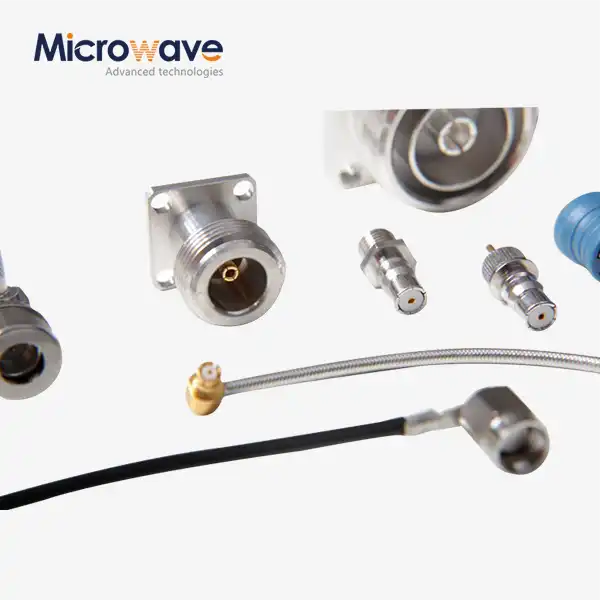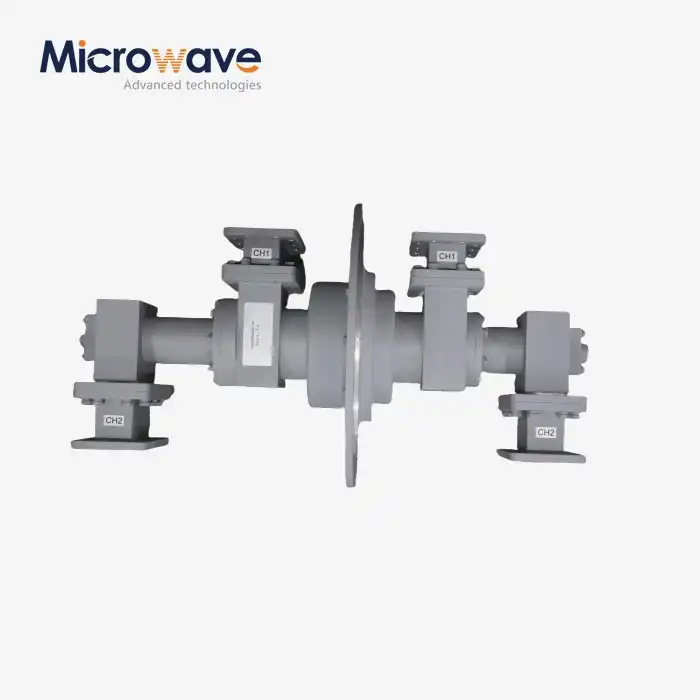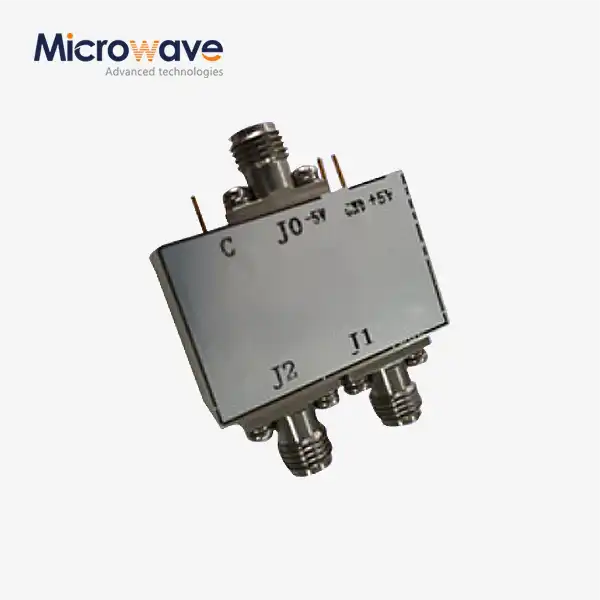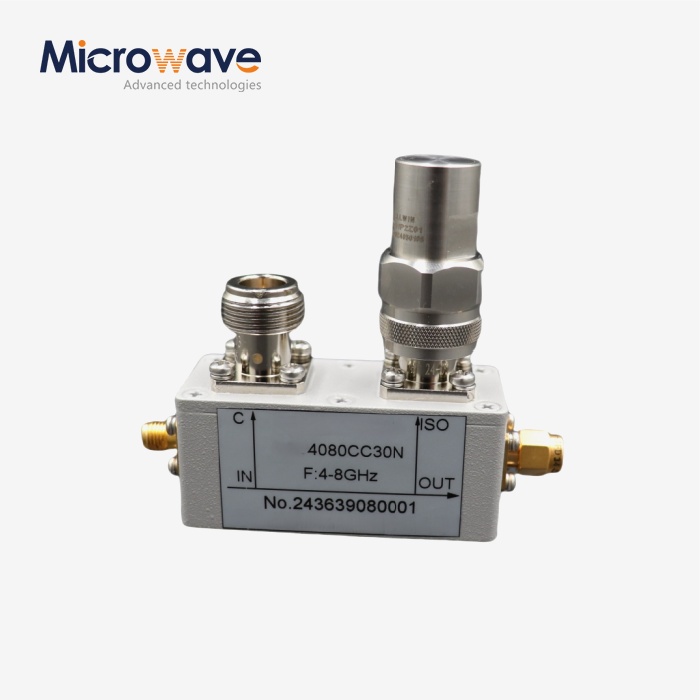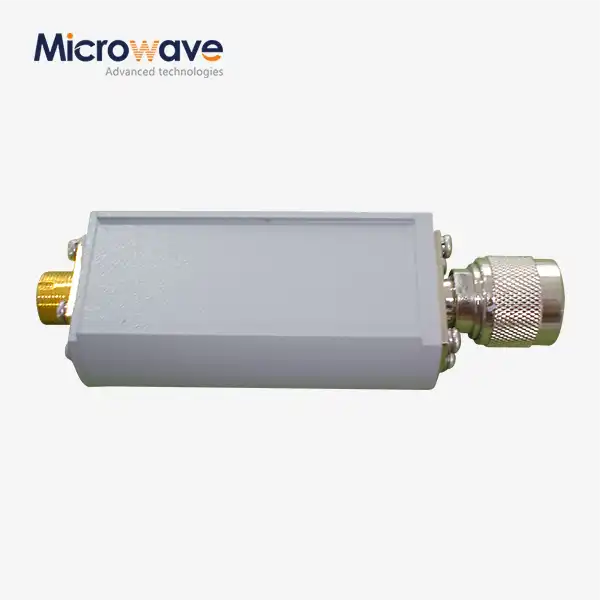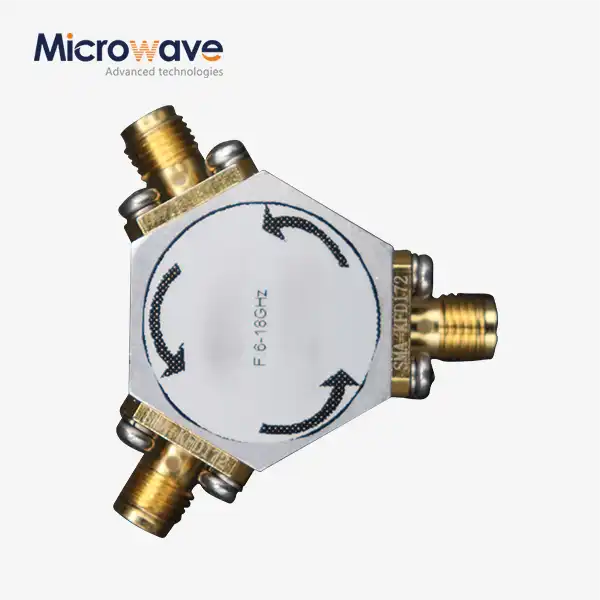Horn Antenna Basics and Types: Sectoral, Pyramidal, and Conical
When satellite ground stations lose 2.3dB of signal strength mid-transmission or radar systems fail to track aircraft accurately in adverse weather conditions, the root cause often traces back to inadequate antenna performance. Horn antennas, particularly the Pyramidal Linear Polarization Horn Antenna, have emerged as the solution to these critical challenges in microwave communication systems. Understanding the fundamentals of horn antenna types—sectoral, pyramidal, and conical—enables engineers to select optimal configurations that prevent costly signal degradation and ensure reliable performance in demanding applications ranging from defense radar to satellite communications.
What is a Horn Antenna and Why Does It Matter?
Horn antennas represent a fundamental breakthrough in microwave technology, functioning as flared waveguides that transform confined electromagnetic energy into directed radio wave beams. The horn configuration serves as an impedance matching transformer between the waveguide feeder and free space, which possesses an impedance of 377 ohms. Without this carefully engineered transition, significant energy reflection occurs at the waveguide aperture, resulting in poor radiation efficiency and potential signal loss that can cripple communication systems. The operational principle centers on gradually expanding the waveguide walls to create a horn shape, enabling electromagnetic waves to radiate efficiently while maintaining control over beam direction and pattern. This flaring mechanism minimizes abrupt discontinuities that cause destructive reflections and diffraction effects at waveguide edges. The Pyramidal Linear Polarization Horn Antenna excels in this role by providing controlled expansion in both E-plane and H-plane directions, achieving superior impedance matching across broad frequency ranges. Modern horn antennas operate effectively within the frequency spectrum from 300MHz to 110GHz, covering UHF through millimeter-wave bands. This extensive range accommodates legacy communication systems, contemporary 5G networks, and emerging 6G technologies. The physical dimensions of horn antennas scale inversely with frequency—higher frequency applications utilize compact designs while lower frequencies require proportionally larger structures to maintain efficiency. For satellite communication and radar applications where signal integrity directly impacts mission success, the Pyramidal Linear Polarization Horn Antenna delivers consistent performance across operational frequency bands.
Core Design Principles and Performance Characteristics
The horn antenna architecture comprises three essential components that work in concert to achieve optimal electromagnetic performance. The feed waveguide section introduces the signal into the antenna structure, typically through a rectangular or circular waveguide connection. From this entry point, the flare section gradually expands, creating the characteristic horn shape that provides impedance transformation. Finally, the aperture represents the open radiating end where electromagnetic waves exit into free space with controlled directivity and minimal reflection. Aperture efficiency constitutes a critical performance metric for horn antennas, typically ranging from 0.4 to 0.8 in practical implementations. Optimized pyramidal horn designs achieve aperture efficiency values around 0.511, while conical horn configurations reach approximately 0.522. These efficiency factors directly influence antenna gain calculations and radiation pattern characteristics. The Pyramidal Linear Polarization Horn Antenna achieves gain values between 15dB and 35dB depending on physical dimensions and flare angle optimization, providing sufficient directivity for long-range communication links and precision radar applications. Beamwidth parameters define the angular spread of radiated energy, with pyramidal horns offering independent control over E-plane and H-plane beam patterns. This bidirectional control enables engineers to tailor radiation characteristics for specific application requirements. Narrow beamwidths concentrate energy for maximum gain and range, while broader beams provide wider coverage areas suitable for search radar and wide-angle surveillance systems. The relationship between horn length, aperture dimensions, and beamwidth follows established mathematical relationships that guide design optimization for target performance specifications.

Understanding Pyramidal Horn Antennas in Depth
Pyramidal horn antennas derive their name from the four-sided pyramidal shape formed by flaring both pairs of opposite walls in a rectangular waveguide. This configuration produces a rectangular aperture that radiates linearly polarized electromagnetic waves with controlled directivity in orthogonal planes. The TE10 mode propagates through the rectangular waveguide feed, exciting the pyramidal structure to generate radiation patterns characterized by predictable main lobe direction and manageable sidelobe levels. The Pyramidal Linear Polarization Horn Antenna offered by Advanced Microwave operates across frequency ranges from 1GHz to 40GHz, supporting applications spanning L-band through Ka-band communications. Linear polarization ensures stable signal transmission with minimal interference from cross-polarized components, essential for reliable data transfer in satellite ground stations and point-to-point microwave links. The antenna maintains 50-ohm input impedance for compatibility with standard transmission line systems and RF components. Construction materials significantly impact antenna performance and environmental durability. High-strength aluminum alloy provides excellent conductivity while minimizing weight, critical for aerospace and portable radar applications. Precision manufacturing techniques ensure smooth interior surfaces that reduce ohmic losses and maintain phase coherence across the aperture. Operating temperature specifications from -40°C to +85°C accommodate extreme environmental conditions encountered in military operations, arctic installations, and desert deployments where the Pyramidal Linear Polarization Horn Antenna must function reliably without performance degradation.
Technical Advantages and Design Trade-offs
Pyramidal horn antennas deliver numerous advantages that explain their widespread adoption in professional microwave systems. Simple structural design facilitates cost-effective manufacturing through standard machining processes or precision metal forming techniques. The absence of resonant elements enables wideband operation spanning multiple octaves, eliminating the need for frequency-specific tuning adjustments. Stable electrical characteristics across operational bandwidths simplify system integration and reduce testing requirements during deployment. When gain requirements remain below 22dB, pyramidal horns maintain compact dimensions with manageable length-to-aperture ratios. The independent control of E-plane and H-plane radiation patterns enables beam shaping tailored to application-specific coverage requirements. For instance, air traffic control radar benefits from narrow azimuth beamwidth for precise angular resolution combined with broader elevation coverage for altitude tracking. The Pyramidal Linear Polarization Horn Antenna achieves these customized beam profiles through careful aperture dimension selection and flare angle optimization. However, design challenges emerge when applications demand very high gain values exceeding 25dB. Achieving elevated gain requires proportionally larger aperture dimensions, which necessitates extended horn length to maintain proper phase distribution across the radiating surface. The resulting antenna becomes physically elongated, creating mechanical challenges for mounting and pointing systems. Weight increases correspondingly, potentially limiting applications where size and mass constraints dominate design decisions. Alternative feeding configurations mitigate some limitations—coaxial input directly coupled to the horn provides compact integration, while waveguide-to-coaxial transitions offer installation flexibility for systems with existing waveguide infrastructure.
Applications Across Critical Industries
The versatility of Pyramidal Linear Polarization Horn Antennas extends across multiple high-consequence applications where communication reliability directly impacts operational success. Satellite communication ground stations employ these antennas as feed horns for large parabolic reflectors, concentrating uplink power toward orbiting spacecraft and efficiently collecting weak downlink signals. The linear polarization characteristic aligns with satellite transponder configurations, maximizing power transfer efficiency and enabling high-definition video transmission, broadband data connectivity, and voice communication services. Defense and aerospace systems leverage pyramidal horn capabilities for radar surveillance, missile guidance, and electronic warfare applications. Military radar installations utilize these antennas to detect and track aerial threats with sufficient angular accuracy for fire control solutions. The consistent radiation patterns and stable gain characteristics ensure reliable target detection across operational frequency bands, even in electronic countermeasure environments. Navigation aids for aircraft approach and landing systems depend on pyramidal horn antennas to generate precision beam patterns that define electronic glide slopes with minimal distortion. Telecommunications infrastructure incorporates Pyramidal Linear Polarization Horn Antennas in microwave backbone links that transport cellular traffic between base stations and core network facilities. The high gain and narrow beamwidth enable long-distance point-to-point connections spanning tens of kilometers, providing gigabit-capacity links that support growing mobile data demand. Weather monitoring networks employ these antennas in Doppler radar systems that measure atmospheric conditions, precipitation intensity, and wind patterns essential for accurate meteorological forecasting and severe weather warning systems.
Sectoral Horn Antennas: Specialized Beam Control
Sectoral horn antennas represent a specialized variation where flaring occurs along only one pair of opposite walls while the remaining pair stays parallel. This asymmetric configuration produces characteristic fan-shaped beam patterns—narrow in the flared plane while maintaining broad coverage in the non-flared dimension. Two fundamental subtypes define sectoral horn categories based on flaring orientation relative to field polarization within the feed waveguide. E-plane sectoral horns implement flaring in the direction of the electric field vector, expanding the aperture dimension parallel to the E-field while maintaining constant width in the H-field direction. This configuration generates a beam pattern that is narrow in elevation but broad in azimuth, suitable for applications requiring wide horizontal coverage with limited vertical extent. H-plane sectoral horns reverse this relationship by flaring in the magnetic field direction, producing beams that are narrow in azimuth but broad in elevation. The asymmetric radiation patterns of sectoral horns find particular application in wide-area search radar systems where continuous scanning across extended azimuth sectors provides surveillance coverage. By constraining beamwidth in one plane while maintaining broad coverage in the orthogonal plane, these antennas optimize detection range and update rate for their intended mission profile. Feed horn applications for reflector antennas sometimes employ sectoral configurations to achieve specific illumination patterns that enhance reflector efficiency or suppress sidelobe radiation in designated angular regions.
Conical Horn Antennas: Circular Symmetry
Conical horn antennas employ circular waveguide feeds that flare outward in a cone shape, producing circular apertures and rotationally symmetric radiation patterns. The cone geometry provides uniform beamwidth characteristics in all azimuthal directions, simplifying pointing requirements and ensuring consistent performance regardless of antenna rotation angle. This symmetry proves advantageous for applications involving mechanical scanning or where polarization orientation may vary during operation. Manufacturing considerations influence conical horn selection for specific applications. The circular cross-section simplifies machining processes for precision metal turning operations, potentially reducing production costs compared to pyramidal configurations requiring multiple flat surface dimensions. Interior surface finish critically impacts electrical performance, with smoother walls minimizing ohmic losses that degrade efficiency at higher microwave frequencies. The Pyramidal Linear Polarization Horn Antenna achieves comparable performance through carefully controlled rectangular aperture dimensions, offering alternatives when linear polarization and asymmetric beam patterns better suit system requirements. Gain performance for conical horns typically ranges from 10dB to 20dB in standard configurations, with extended designs achieving higher directivity at the expense of increased physical length. The relationship between cone angle, aperture diameter, and axial length follows established design equations that enable engineers to optimize configurations for target frequency bands and gain specifications. Circular polarization implementations require specialized feeding arrangements or external polarization networks, whereas linear polarization versions operate with straightforward waveguide coupling.
Advanced Variations: Corrugated and Exponential Horns
Corrugated horn antennas incorporate parallel grooves or slots along interior walls, creating periodic structures with dimensions small compared to operating wavelengths. These corrugations modify boundary conditions for electromagnetic fields, enabling improved impedance matching and reduced sidelobe levels compared to smooth-wall designs. The corrugated configuration achieves nearly symmetric E-plane and H-plane radiation patterns, a characteristic highly valued for precision reflector antenna feed applications where illumination symmetry directly impacts overall system performance. Bandwidth enhancement represents another significant advantage of corrugated horns, with operational frequency ranges spanning multiple octaves while maintaining consistent radiation characteristics. Satellite ground station antennas for commercial and scientific applications frequently specify corrugated feed horns to maximize data throughput and minimize interference from adjacent satellites operating at similar frequencies. Radio telescope installations employ corrugated designs to achieve the low sidelobe levels and excellent cross-polarization discrimination required for detecting faint cosmic signals against terrestrial interference backgrounds. Exponential horn antennas feature curved flare profiles where sidewall separation increases exponentially as a function of axial distance from the waveguide throat. This smooth, gradual taper minimizes internal reflections across extremely wide bandwidths, achieving nearly constant input impedance and voltage standing wave ratio (VSWR) characteristics. The exponential profile can be applied to either pyramidal or conical geometries, providing scalar horn configurations prized for applications demanding maximum bandwidth and minimum reflection loss. High-performance communication satellite antennas and precision measurement systems justify the additional manufacturing complexity required for exponential profile implementation.

Selecting the Right Horn Antenna Configuration
Choosing between pyramidal, sectoral, and conical horn antenna types requires careful analysis of application-specific requirements balanced against performance characteristics and practical constraints. Frequency band allocation fundamentally influences antenna dimensions, with lower frequencies demanding proportionally larger structures to achieve comparable gain and beamwidth performance. System gain requirements directly impact aperture size and horn length, creating trade-offs between electrical performance and physical implementation constraints. Polarization requirements narrow configuration choices, with the Pyramidal Linear Polarization Horn Antenna providing optimal performance for systems operating with linear polarization schemes. Applications requiring circular polarization must incorporate specialized feeding networks or select antenna configurations inherently suited to circular polarization generation. Beam pattern specifications define whether symmetric conical patterns or asymmetric pyramidal beam shapes better match coverage requirements, while sidelobe constraints may necessitate corrugated variations or exponential profile implementations. Environmental operating conditions impose material selection and construction technique requirements that influence antenna longevity and reliability. Harsh environments with extreme temperature variations, high humidity, or corrosive atmospheres demand robust materials and protective coatings that maintain electrical performance throughout operational lifetimes. The Pyramidal Linear Polarization Horn Antenna manufactured by Advanced Microwave utilizes high-strength aluminum construction with appropriate surface treatments for environmental protection, ensuring reliable operation across demanding deployment scenarios encountered in aerospace, defense, and industrial applications.
Integration Considerations and System Performance
Successful horn antenna deployment extends beyond selection of appropriate antenna type to encompass proper integration with associated RF systems and mechanical mounting structures. Input coupling mechanisms must provide low-reflection transitions that preserve signal integrity and maximize power transfer efficiency. Standard waveguide flanges conforming to established dimensional standards simplify integration with existing waveguide systems, while coaxial connector options (SMA, N-type, or custom configurations) accommodate systems built around coaxial transmission line architecture. Mechanical mounting arrangements must withstand environmental loads including wind forces, ice accumulation, and seismic accelerations while maintaining precise pointing accuracy. Antenna orientation directly affects polarization alignment with communication links, requiring careful installation procedures and verification measurements. Weatherproofing provisions protect interior surfaces from moisture intrusion that degrades electrical performance and accelerates corrosion damage. The Pyramidal Linear Polarization Horn Antenna supports flexible mounting options suitable for fixed installations, mobile platforms, and temporary deployments where rapid setup and teardown capabilities prove essential. System-level performance verification requires comprehensive testing across operational frequency bands, measuring critical parameters including return loss, insertion loss, gain, radiation pattern symmetry, and polarization purity. Advanced Microwave Technologies employs a state-of-the-art 24-meter microwave darkroom facility equipped with near-field and far-field measurement capabilities spanning 0.5GHz to 110GHz. This extensive measurement infrastructure enables thorough characterization of antenna performance under controlled conditions, ensuring products meet stringent specifications before deployment into mission-critical applications.
Emerging Applications and Technology Evolution
The proliferation of high-bandwidth wireless communication systems continues expanding horn antenna applications into emerging technology domains. Fifth-generation (5G) cellular networks operating in millimeter-wave bands above 24GHz employ horn antennas for backhaul links, small cell base stations, and customer premises equipment. The compact dimensions of millimeter-wave horn implementations enable integration into dense urban deployments where space constraints limit antenna options, while high gain characteristics support the long link distances required for economical network architecture. Future 6G wireless standards under development target even higher frequencies extending into sub-terahertz regions where propagation characteristics create unique challenges and opportunities. The Pyramidal Linear Polarization Horn Antenna design principles scale effectively to these elevated frequency bands, providing proven radiation mechanisms adaptable to next-generation communication requirements. Advanced manufacturing techniques including precision computer numerical control (CNC) machining and metal additive manufacturing enable production of miniature horn structures with the dimensional tolerances required for optimal millimeter-wave and terahertz performance. Space exploration missions increasingly rely on sophisticated horn antenna systems for deep-space communication links and scientific instrumentation. Planetary landers, orbital spacecraft, and interplanetary probes depend on efficient antenna designs that maximize limited available power while coping with extreme temperature variations and radiation exposure. The robust construction and predictable performance characteristics of pyramidal and conical horn configurations provide reliable solutions for these demanding applications where maintenance remains impossible and mission success depends on flawless operation over multi-year mission durations.
Conclusion
Horn antenna technology encompasses diverse configurations—sectoral, pyramidal, and conical—each optimized for specific applications requiring directional radiation patterns and efficient impedance matching between waveguide feeds and free space. The Pyramidal Linear Polarization Horn Antenna delivers superior performance across critical applications spanning satellite communications, defense radar, aerospace systems, and telecommunications infrastructure through careful engineering of flare geometry, aperture dimensions, and material selection that balance electrical characteristics against practical implementation constraints.
Cooperate with Advanced Microwave Technologies Co., Ltd.
Advanced Microwave Technologies Co., Ltd. stands as a premier China Pyramidal Linear Polarization Horn Antenna manufacturer, supplier, and factory with over 20 years of specialized experience in microwave product development and production. Our comprehensive product portfolio includes waveguide assemblies, coaxial and cable assemblies, microwave antennas, measurement systems, and custom feed networks serving aviation, aerospace, shipboard, weather monitoring, security, UAV, and direction-finding applications worldwide. With ISO 9001:2015, ISO 14001:2015, and ISO 45001:2018 certifications, our commitment to quality, environmental stewardship, and occupational safety ensures every High Quality Pyramidal Linear Polarization Horn Antenna meets rigorous international standards.
Our state-of-the-art 24-meter microwave darkroom equipped with advanced measurement capabilities from 0.5GHz to 110GHz enables precise characterization and optimization of antenna performance for your demanding applications. Whether you require standard Pyramidal Linear Polarization Horn Antenna for sale or custom OEM solutions with tailored frequency ranges, gain specifications, and connector types, our expert engineering team delivers cost-effective designs backed by comprehensive technical support including installation guidance and fault diagnostics. As a trusted China Pyramidal Linear Polarization Horn Antenna wholesale provider, we offer competitive Pyramidal Linear Polarization Horn Antenna price structures, rapid prototyping, quick turnaround manufacturing, and reliable delivery for projects ranging from research prototypes to high-volume production runs. Contact our team at craig@admicrowave.com today to discuss your specific requirements and discover how our proven expertise can enhance your system performance and accelerate your project success.
References
1. Balanis, Constantine A. Antenna Theory: Analysis and Design. Fourth Edition. John Wiley & Sons, 2016.
2. Kraus, John D., and Ronald J. Marhefka. Antennas: For All Applications. Third Edition. McGraw-Hill Education, 2002.
3. Stutzman, Warren L., and Gary A. Thiele. Antenna Theory and Design. Third Edition. John Wiley & Sons, 2012.
4. IEEE Standard Definitions of Terms for Antennas. IEEE Std 145-2013 (Revision of IEEE Std 145-1993). Institute of Electrical and Electronics Engineers, 2014.




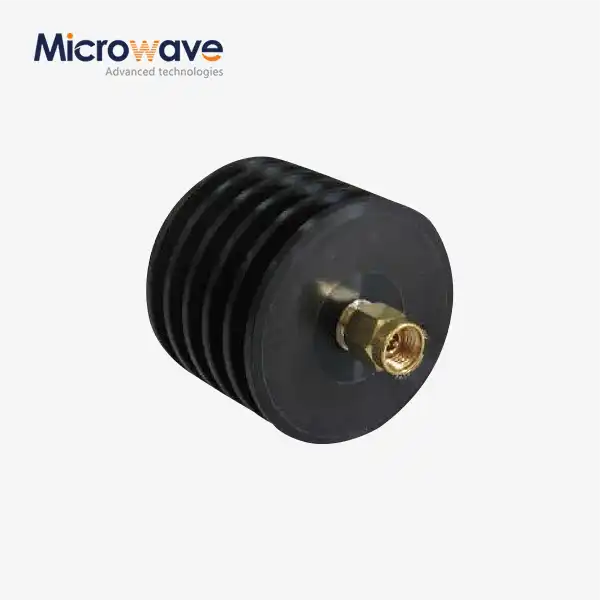
_1733809032116.webp)
